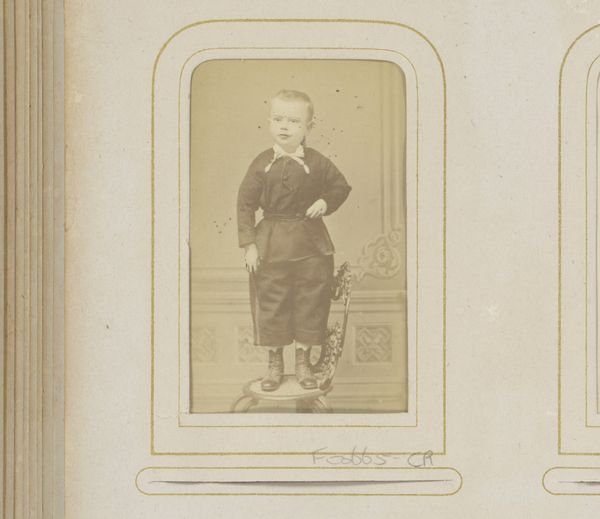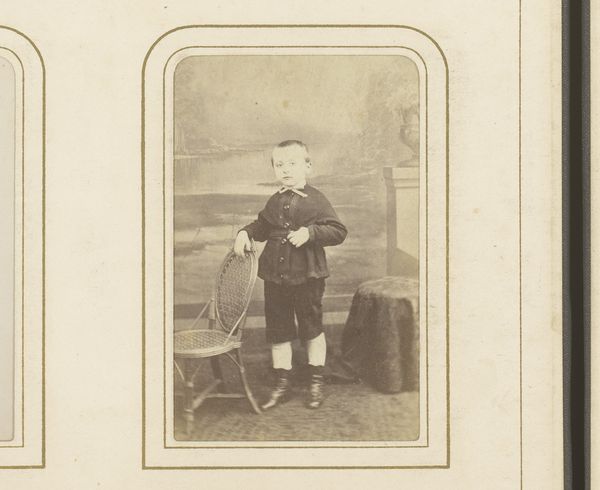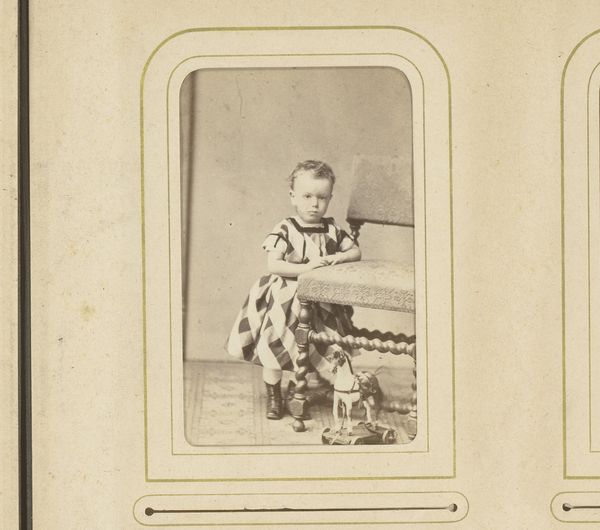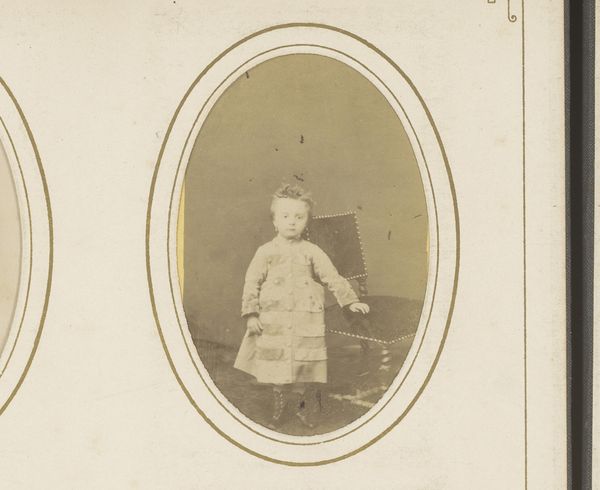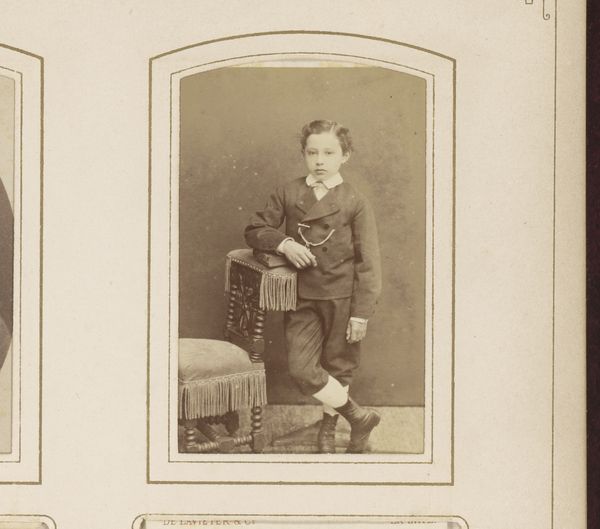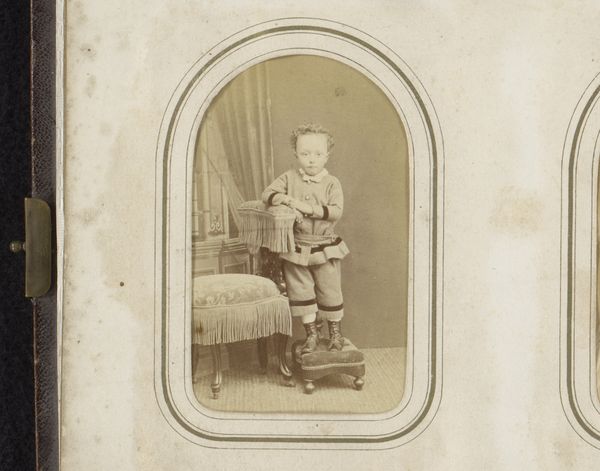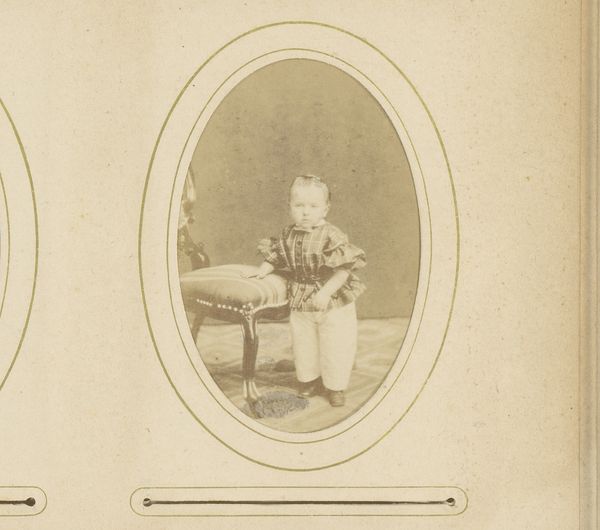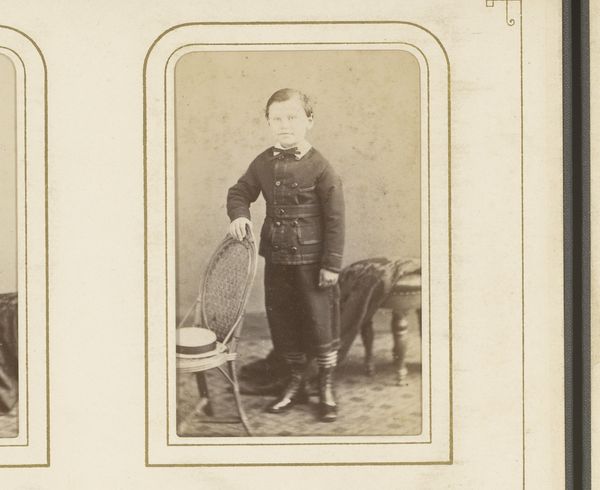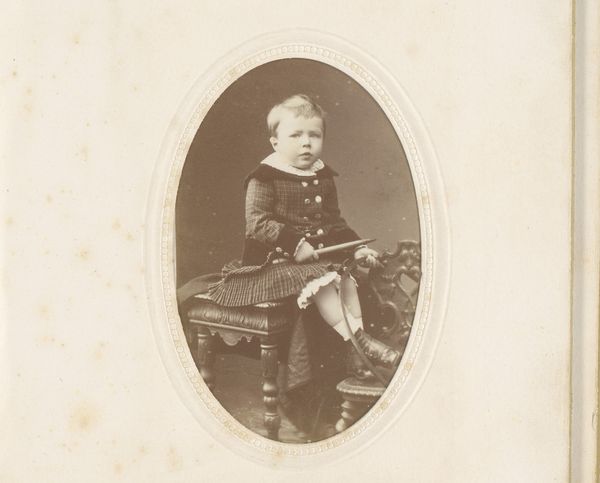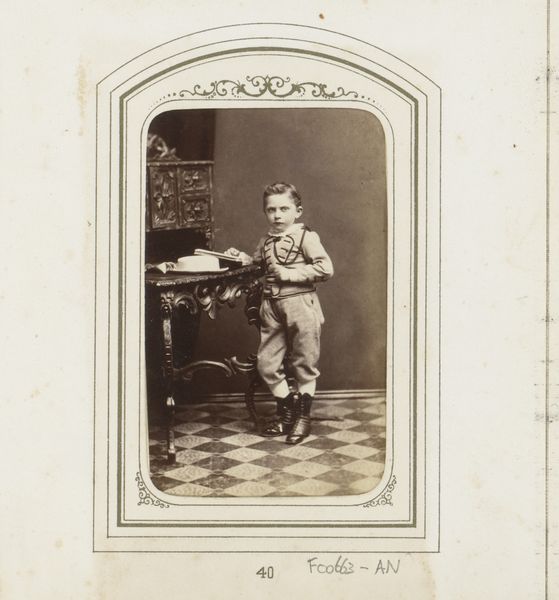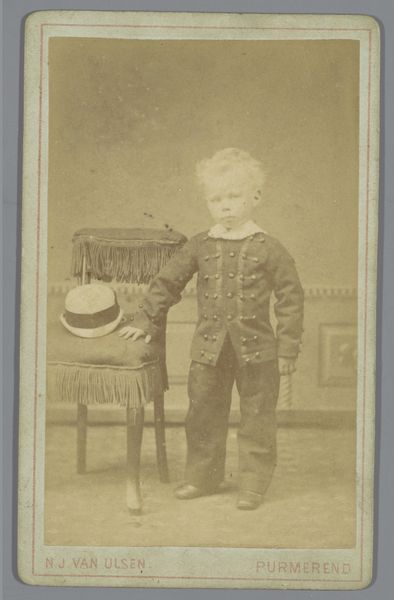
photography
#
portrait
#
photography
#
historical photography
#
19th century
#
genre-painting
Dimensions: height 82 mm, width 50 mm
Copyright: Rijks Museum: Open Domain
Curator: Welcome. The work before us is entitled "Portret van een jongen, staand bij een stoel" - "Portrait of a boy, standing by a chair." We estimate its creation between 1860 and 1900, captured through the emerging medium of photography, now attributed to Gerarda Henriëtte Matthijssen. Editor: It's a strikingly melancholic piece. The child looks burdened, doesn't he? There's a stiffness to his pose and a shadow in his eyes. It almost feels staged, too formal for genuine childhood emotion. Curator: The formal elements are very much a product of their time. Photography was becoming increasingly accessible, yet it retained an element of ritual. Consider the social and cultural pressures on children then—their visibility within a family’s socio-economic aspirations. This is as much a performance of ideal childhood as it is an image of an actual child. Editor: Yes, and look at the elaborate detailing on the chair – and even his clothes, it's all so considered. One has to imagine the manufacturing of such ornate objects was part of this boy's family identity and position within society, no? Curator: Precisely! His posture against the chair and the fashionable, if somewhat adult-like, attire become performative signals, marking out his place within the burgeoning middle classes. One wonders about the labor and industries that allowed for this representation. Who made that chair, who made the boy's suit, what were their lives like in relation to the boy’s? Editor: Interesting questions to pose given that photography at that time required extensive processing. Considering the collodion process, the tintypes, and the equipment involved, do we know who precisely printed or assembled this image? Perhaps thinking of that worker would also illuminate the boy's class. Curator: Indeed. The means of photographic production in this context open new avenues for investigation. As for the sitter's experience and presentation, he could represent childhood expectations but perhaps he resisted expectations in ways that were, even now, preserved. Editor: A good point, and to move even further, considering photography as a material practice reveals layers beyond its representative function, offering tangible connections to a long past. Curator: It is definitely much to consider, both historically and artistically. Thanks! Editor: Absolutely. Food for thought about production and consumption across generations.
Comments
No comments
Be the first to comment and join the conversation on the ultimate creative platform.
